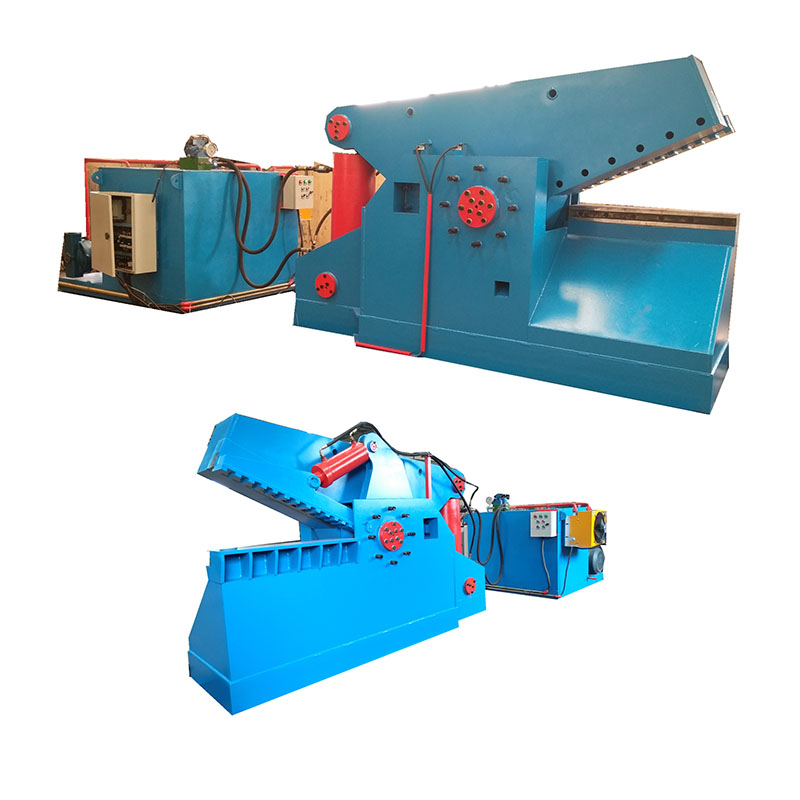
Oct . 13, 2025 14:15 Back to list
If you’ve spent time in a scrap yard or a melt shop, you already know: the right baler can make or break throughput. In the last five years, demand has shifted from “just compress it” to “compress it precisely, traceably, and safely.” To be honest, I didn’t expect software and sensors to matter this much in a machine built to mash steel. Yet here we are—PLC diagnostics, density monitoring, and predictive maintenance are now table stakes. From Baoding City’s workshops to dockside yards, Metal Balers have become the quiet backbone of profitable recycling lines.

Typical users include steel plants, recycling companies, and ferrous/non‑ferrous smelters. The goal is simple: turn loose scrap—steel, copper, aluminum, stainless, even end-of-life vehicles—into furnace-ready charges. The payoffs are real: lower transport cost, faster charging, better furnace yield. Many customers say cycle stability matters more than peak force; consistent 30–40 s cycles keep conveyors and staffing in sync.
| Model | Press Force (t) | Bale Size (mm) | Cycle Time (s) | Motor Power (kW) | Throughput (t/h) |
|---|---|---|---|---|---|
| HB-125 | ≈125 | 400×400 | 35–45 | 22–30 | 3–5 |
| HB-200 | ≈200 | 500×500 | 30–40 | 37–55 | 5–8 |
| HB-315 | ≈315 | 600×600 | 28–35 | 75–90 | 8–12 |
| HB-500 | ≈500 | 700×700–800×800 | 25–32 | 110–132 | 10–15 |
Real-world throughput varies by scrap grade and operator rhythm. Typical bale density: steel ≈1.3–1.7 t/m³; aluminum ≈0.8–1.2 t/m³.
Feed → Pre‑compression (side/cover) → Main compression → Bale tie/eject → Weigh/log → Stack/ship. For controls, most yards ask for Siemens PLC with simple HMI, recipe-based density targets, and auto-lube. Oil: AW‑46; filtration to 10 μm absolute is a smart upgrade.

| Vendor | Origin | Customization | Certs | After‑Sales |
|---|---|---|---|---|
| OW Recycling | Dafu Village, Qingyuan Town, Baoding, Hebei | Bale size/force/PLC/liners | ISO 9001, CE (available) | Remote diagnostics + spares in 72–96h |
| Generic Importer | Mixed OEM | Limited | Basic CE | Third‑party only |
| Local Fabricator | Domestic | High, but lead-time | Varies | Direct, limited parts stock |
Scrap mix (ISRI grades), target bale density, daily tonnage, footprint, electrical standards, and safety extras (light curtains, fencing). And yes—ask for weld maps, pressure-test certificates, and a spare-parts list for year one.
Certifications and standards touched
ISO 9001 (QMS), CE compliance to Machinery Directive, ISO 4413 (hydraulics), ISO 12100 (risk assessment), EN 60204‑1 (electrical). It sounds dry, but it keeps insurance auditors happy.
Citations
Latest news
Double Shaft Shredder Price Explained: Global Trends, Benefits & Vendor Comparisons
NewsNov.24,2025
Expert Insights into Double Shaft Shredder Factory: Boosting Global Recycling Efficiency
NewsNov.23,2025
Leading Double Shaft Shredder Suppliers for Industrial Recycling and Waste Management
NewsNov.23,2025
Leading Double Shaft Shredder Manufacturers | Durable & Sustainable Industrial Shredders
NewsNov.23,2025
Understanding Double Shaft Shredder Machine Price: Buyers’ Guide & Global Insights
NewsNov.22,2025
The Essential Guide to Double Shaft Shredders: Benefits, Applications & Trends
NewsNov.22,2025